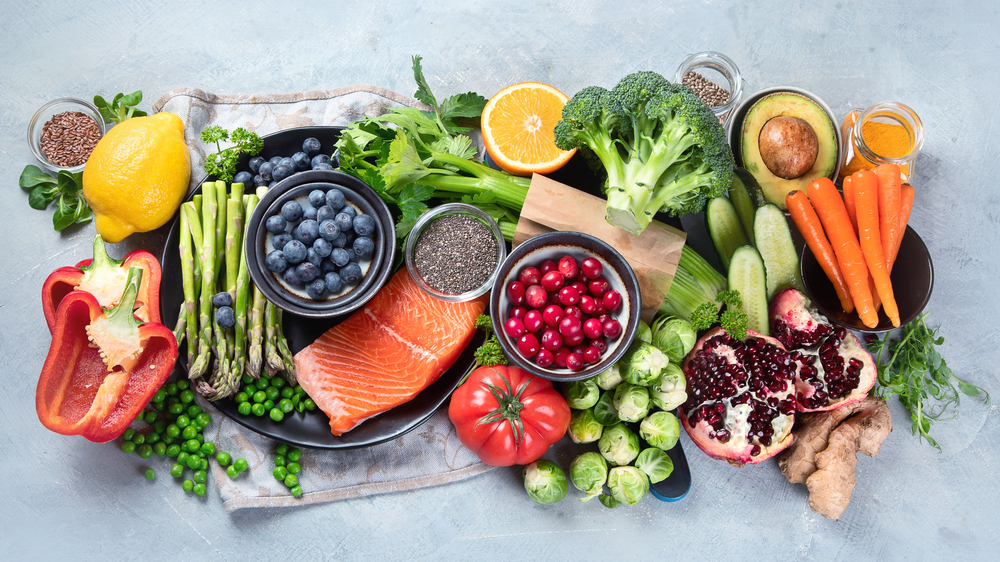Dance Talk
Our dance season never ends. Learn dance tips from the best.
Finding Your Balance with Healthy Eating

Finding Your Balance with Healthy Eating
Dance is an aesthetic sport, combining athleticism with artistry. Because of this, there is often a belief that a certain body type is equated with success. In the drive for excellence, many well-meaning dancers seek out nutrition advice or fad diets to improve their eating habits. Initially, dancers may lose weight, feel healthier, and improve performance, but too often this backfires and results in loss of energy, increased injury and weight gain. Unfortunately, for some individuals "healthy eating" goes too far and may become an unhealthy obsession or eating disorder.
The problem with diets that are overly restrictive, label foods (i.e. "sugar is bad") or take out entire food groups (i.e. carbohydrates) is they don't work - or everyone who diets would be thin. These type of approaches at weight loss or eating healthy are certainly appealing as they give the dancer an illusion of control. But sadly, the dieting cycle actually contributes to more distress. The good news is that a dancer can have a healthy and peaceful relationship with food by focusing on strategies that will help you optimize body composition and improve athletic performance.
1. Create a Small Calorie Deficit.
For dancers who want to prevent weight gain or may need to lose weight, weight loss happens when there is a caloric deficit. Unfortunately, the body responds to a caloric deficit with a number of metabolic adaptations. In the Journal of the International Society of Sports Nutrition, Trexler, et al. summarizes results from a number of studies indicating that the body's response to hypocaloric diets is to increase hunger, conserve energy, and promote loss of lean body mass (LBM). Consequently, repeated cycles of weight loss and regain ultimately result in long-term weight gain. To minimize these effects, it is recommended to utilize the smallest possible deficit, such as 10-15% of calories, to yield an average weight loss of 0.5 pound per week. For example, if you need 2000 calories to maintain your weight, create a 200-250 calorie deficit per day. This may decrease the rate of weight loss, but will also reduce unfavorable adaptations.
2. Manage Your Hunger.
There are many factors that affect hunger and appetite. Hunger is simply your body's physical request for fuel, while appetite is a psychological urge for 'what sounds good." The biggest mistake made by weight conscious dancers is getting overly hungry and relying entirely on willpower to avoid eating too much. Unfortunately, many dieters skip breakfast, skimp on lunch, and blow it by "giving in" and overeating later in the day (when they are tired, stressed, bored, etc.). Giving yourself permission to eat enough at breakfast and lunch will help you control the amount of food your body needs. Plan ahead by dividing your energy needs into about 3-5 meals/snacks and mindfully fuel up during the most active part of your day.
3. Increase Protein Intake.
Loss of muscle while trying to reduce body weight is obviously undesired. Research has indicated that resistance training along with sufficient protein intake will help preserve muscle. Increasing your intake of protein-containing foods (such as meat, poultry, fish, beans, legumes, and dairy products) will also promote satiety which delays the onset of hunger for the next meal. Protein needs vary individually, but in general, dancers should aim for about 20 grams of protein per meal or snack (20 grams of protein is the equivalent of a palm-sized serving of meat, pork or poultry; one cup of tofu; or 6 oz Greek yogurt with a couple tablespoons of almonds).
4. Improve Diet Quality.
While I don't recommend defining foods as "good" vs "bad", changing your personal food environment will increase the likelihood that you will eat more nutrient dense foods regularly. Replacing fast food with meals prepared at home is a great first step. Stocking up on fruits, vegetables, lean meats, wholesome carbohydrates, dairy, nuts, and seeds at home and packing a healthy lunch and snack for school will help fuel your dance training, decrease cravings and manage emotional eating. Each meal, try to balance your plate with a serving of lean protein, wholesome carbohydrates, and colorful veggies that will help you feel full and satisfied while providing important nutrients to help you dance and perform at your best. Striving to eat well will definitely pay off during performance season, but all-or-nothing thinking about food, eating and weight will likely contribute to an unhealthy relationship with food and consequently steal your joy dancing.
About the Author: Val Schonberg is a Registered, Licensed Dietitian with a Master's degree in nutrition science and is Board Certified as a Specialist in Sports Dietetics. She is the owner of EnlightenU Nutrition Consulting in Lakeville, Minnesota, and enjoys enlightening individuals about food, eating and overall wellness. For questions or additional information, you can check out her website at www.enlightenUnutrition.com or contact Val directly at 612-865-6813


Follow Us
Follow Us online, join our conversations, engage with our teams around the world!